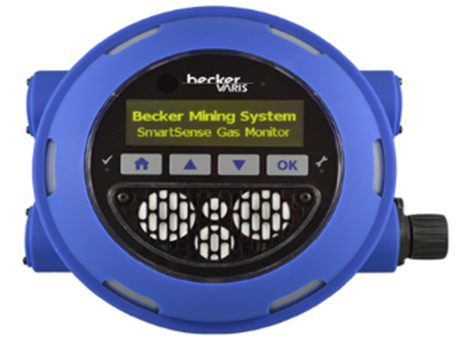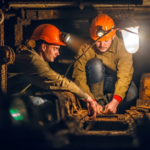Gas detectors are widely used to protect the public and those who live and work in the area. They provide a warning in the event of hazardous gases and can be designed in various ways to suit different gas monitoring applications.
Becker Wholesale Mining Supply is here to provide an informative guide about the types of detectors, their uses, and how they work. We offer a variety of gas detection equipment from internationally recognized manufacturers, and our team of experts is well-versed in gas detection.
Gas detectors come in eight different types, each utilizing its own technology to detect and monitor gas levels. These types are classified based on their operation mechanisms, as different industrial applications require unique gas detection safety systems. In this article, we will discuss four types of gas sensors: catalytic sensors (electrochemical), infrared, and photoionization.
These gas detection types can be divided into two main categories: fixed and portable. Portable gas detectors can be worn or carried on safety gear to monitor the atmosphere for personnel. They emit audible and visible signals to alert users when dangerous levels are detected.
Fixed gas detectors are installed in areas that require continuous protection, such as underground parking garages. They are typically equipped with audible and visual warnings to alert users when dangerous gases are detected and can also monitor levels of multiple gases.
Now, let’s take a closer look at the four most common technologies used for gas detection: photoionization, infrared, and catalytic beads. When selecting a gas detector, it’s important to consider whether you need a single-gas or multi-gas detector.
1. Electrochemical Gas Detectors:
Electrochemical gas sensors measure gas concentrations by oxidizing or reducing the gas to an electrode, generating either a positive or negative current. They are widely used to measure target gas concentrations in an external circuit, particularly for combustible gases.
2. Catalytic Bead Sensors:
Catalytic gas sensors are used to detect combustible gases that pose an explosion risk when their concentrations fall between the lower explosive limit (LEL) and the upper explosive limit (UEL). These sensors work on the principle of gas oxidation, which produces heat. A Wheatstone bridge type circuit converts the resulting temperature change into measurable signals.
3. Infrared Gas Sensors:
Infrared sensors are an alternative for detecting combustible gases when there is insufficient oxygen or when high levels of carbon dioxide need to be measured. These sensors utilize the principle of light absorbance to measure the difference in intensity between emitted and absorbed light at a specific wavelength. The sensor then calculates the gas concentration based on the absorption difference.
4. Photoionization Gas Sensors:
Photoionization gas detection involves using ultraviolet light to ionize gases into positive and negative ions, which can be easily detected by a sensor. When a molecule absorbs light energy, ionization occurs, and this method is used to detect or measure the charge of ionized gas. The charge depends on the amount of volatile organic compounds (VOCs) present in the air.
When selecting a gas detector, it’s crucial to consider whether you need a single-gas or multi-gas detector. In many cases, a single gas is monitored, but in restricted and confined areas, it’s important to monitor oxygen levels, toxic gases, and combustible gas concentrations.
Multi-gas detectors can monitor oxygen levels and detect the presence of toxic and combustible gases in the surrounding environment. The specific gases that can be detected depend on the location and the gases targeted for monitoring. Common substances that can be detected by multi-gas detectors include hydrogen sulfide (H2S), carbon monoxide (CO), oxygen, combustible gases (LEL), carbon dioxide (CO2), sulfur oxide, ammonia, chlorine, and volatile organic compounds (VOCs).
This post was written by Justin Tidd, Director at Becker Global America! For over 15 years, Becker Communications has been the industry’s leader in increasingly more sophisticated electrical mining communication systems. As they expanded into surface mining, railroads, and tunneling they added wireless communication systems, handheld radios, tagging, and tracking systems, as well as gas monitoring.



